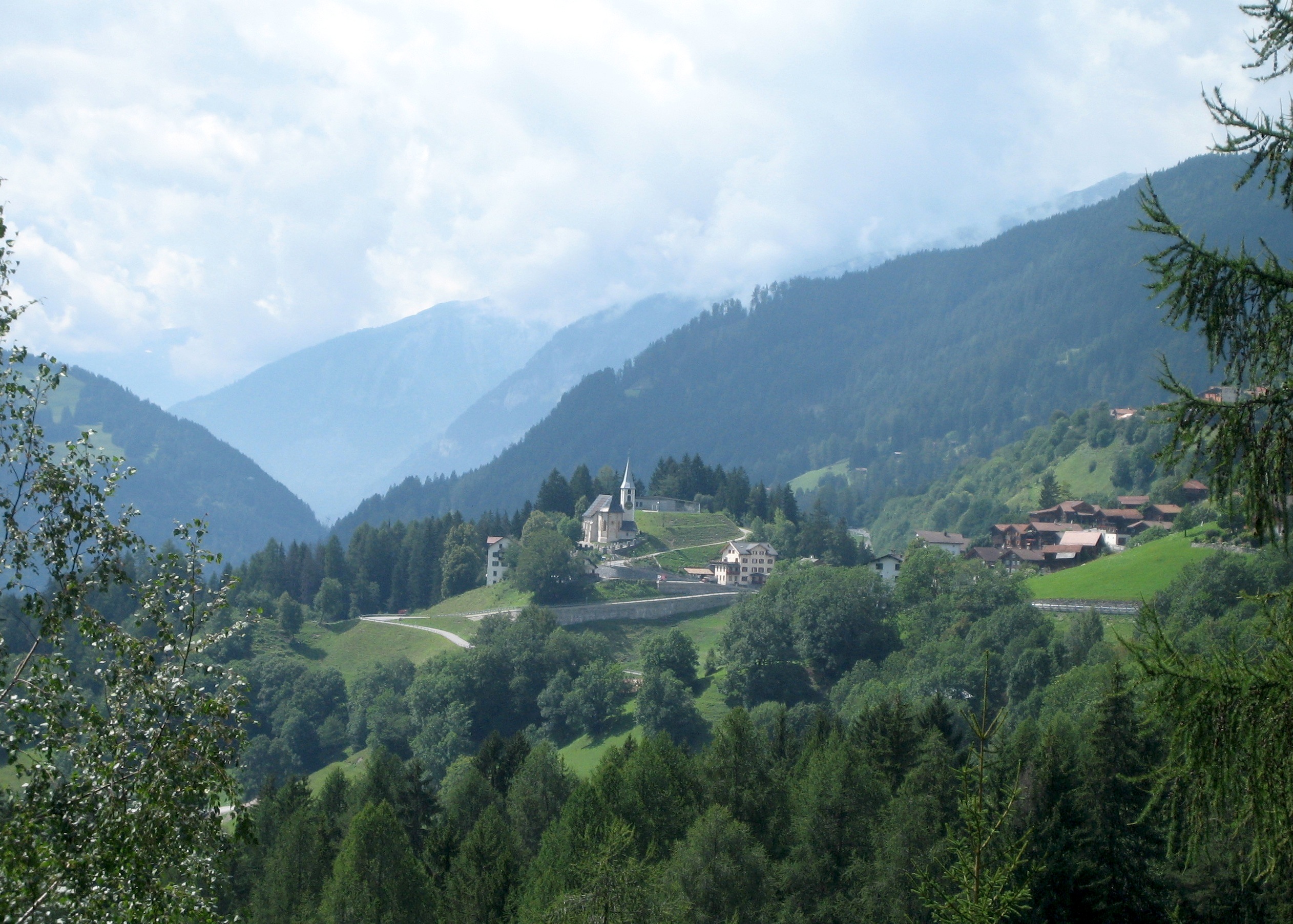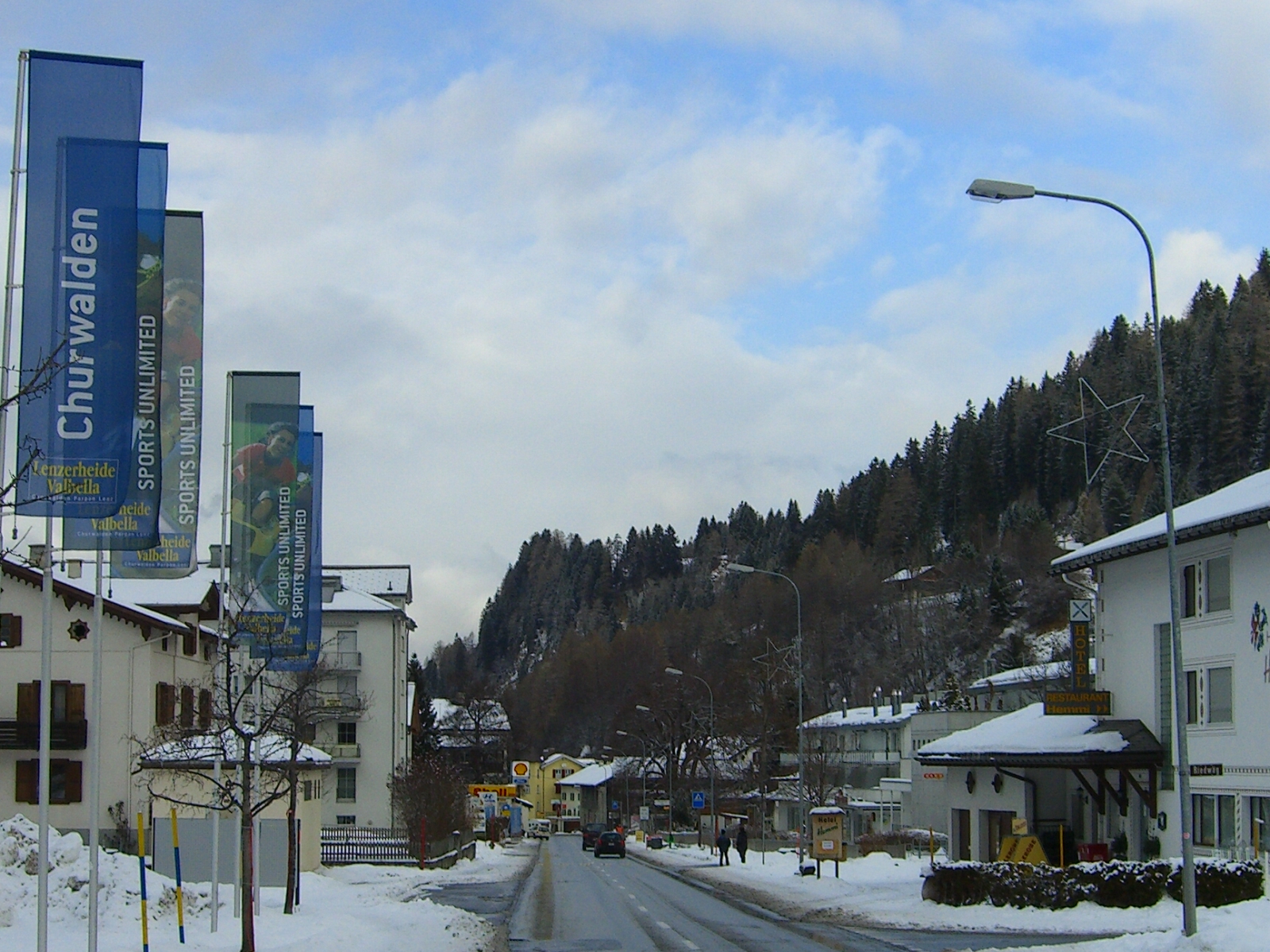|
Praden
Praden (Romansh: ''Prada'') is a village in the municipality of Tschiertschen-Praden in the district of Plessur in the canton of Graubünden in Switzerland. The formerly independent municipality merged with Tschiertschen to form Tschiertschen-Praden on January 1, 2009.Amtliches Gemeindeverzeichnis der Schweiz published by the Swiss Federal Statistical Office accessed 23 September 2009 History Praden is first mentioned in 1157 as ''de Pradis''.Geography Praden has an area, , of . Of this area, 26.2% is used for agricultural purposes, while 67.9% is forest. Of the rest of the land, 1.1% is settled (buildings or roads) and the remainder (4.8%) is non-arable (rivers, glaciers or mountains).[...More Info...] [...Related Items...] OR: [Wikipedia] [Google] [Baidu] |
Tschiertschen-Praden
Tschiertschen-Praden is a municipality in the Plessur Region in the Grisons, Switzerland. It was formed on 1 January 2009 through the merger of Praden and Tschiertschen.Amtliches Gemeindeverzeichnis der Schweiz published by the Swiss Federal Statistical Office accessed 23 September 2009 Geography Tschiertschen has a combined area, , of .accessed 27-Oct-2009 Before 2017, the municipality was located in the Churwalden sub-district of the Plessur district on the mountain slopes above the left side of the Schanfigger valley. It consists of the ''haufendorf'' village (an irregular, unplanned and quit ... [...More Info...] [...Related Items...] OR: [Wikipedia] [Google] [Baidu] |
Tschiertschen
Tschiertschen is a village in the municipality of Tschiertschen-Praden in the district of Plessur in the canton of Graubünden in Switzerland. The formerly independent municipality merged with Praden to form Tschiertschen-Praden on January 1, 2009.Amtliches Gemeindeverzeichnis der Schweiz published by the Swiss Federal Statistical Office accessed 23 September 2009 History Tschiertschen is first mentioned around the end of the 8th Century as ''in Cercene''.Geography Tschiertschen has an area, , of . Of this area, 52.6% is used for agricultural purposes, while 22.6% is forested. Of the rest of the land, 1.4% is settled (buildings or roads) and the remainder (23.4%) is non-productive (rivers, glaci ...[...More Info...] [...Related Items...] OR: [Wikipedia] [Google] [Baidu] |
Maladers
Maladers is a former municipality in the Plessur Region in the canton of Graubünden in Switzerland. On 1 January 2020 the former municipality of Maladers merged into Chur. History Maladers is first mentioned in 1156 as ''de Maladru''. Geography Maladers has an area, (as of the 2004/09 survey) of . Of this area, about 28.1% is used for agricultural purposes, while 63.7% is forested. Of the rest of the land, 4.2% is settled (buildings or roads) and 3.9% is unproductive land. In the 2004/09 survey a total of or about 1.8% of the total area was covered with buildings, an increase of over the 1985 amount. Of the agricultural land, is used for orchards and vineyards, is fields and grasslands and consists of alpine grazing areas. Since 1985 the amount of agricultural land has decreased by . Over the same time period the amount of forested land has increased by . Rivers and lakes cover in the municipality. [...More Info...] [...Related Items...] OR: [Wikipedia] [Google] [Baidu] |
Plessur (district)
Plessur District (german: Bezirk Plessur, rm, ) is a former administrative district in the canton of Graubünden, Switzerland. It had an area of and has a population of 40,707 in 2015. The former district is named after the river Plessur which crosses it. However, the region along the Plessur –and therefore the whole valley–is called Schanfigg. It was replaced with the Plessur Region on 1 January 2017 as part of a reorganization of the Canton. accessed 16 February 2017 Plessur District consisted of three '' ... [...More Info...] [...Related Items...] OR: [Wikipedia] [Google] [Baidu] |
Castiel, Switzerland
Castiel () is a former municipality in the district of Plessur in the canton of Graubünden in Switzerland. On 1 January 2013 the former municipalities of Castiel, Calfreisen, Langwies, Lüen, Molinis, Peist and St. Peter-Pagig merged into the municipality of Arosa.Nomenklaturen – Amtliches Gemeindeverzeichnis der Schweiz accessed 9 February 2013 History Castiel is first mentioned in 1132 as ''Castellum''.Geography  Before the merger, Castiel had a total area of . Of this area, 43.1% is ...
Before the merger, Castiel had a total area of . Of this area, 43.1% is ...
[...More Info...] [...Related Items...] OR: [Wikipedia] [Google] [Baidu] |
Churwalden
Churwalden is a municipality in the Plessur Region in the canton of Graubünden in Switzerland. It incorporates the former municipalities of Malix and Parpan. History Churwalden is first mentioned in 1149 as ''silva Augeria''. In 1191 it was mentioned as ''de Curwalde''. Geography Churwalden has an area, (as of the 2004/09 survey) of . Of this area, about 43.8% is used for agricultural purposes, while 39.6% is forested. Of the rest of the land, 3.7% is settled (buildings or roads) and 12.9% is unproductive land. In the 2004/09 survey a total of or about 2.6% of the total area was covered with buildings, an increase of over the 1984/85 amount. Of the agricultural land, is used for orchards and vineyards, is fields and grasslands and consists of alpine grazing areas. Since 1984/85 the amount of agricultural land has decreased by . Over the same time period the amount of forested land has increased by . Rivers and lakes cover in the municipality. [...More Info...] [...Related Items...] OR: [Wikipedia] [Google] [Baidu] |
Lüen
Lüen is a former municipality in the district of Plessur in the canton of Graubünden in Switzerland. On 1 January 2013 the former municipalities of Lüen, Calfreisen, Castiel, Langwies, Molinis, Peist and St. Peter-Pagig merged into the municipality of Arosa.Nomenklaturen – Amtliches Gemeindeverzeichnis der Schweiz accessed 9 February 2013 History Lüen is first mentioned in 1084 as ''Leune''.Geography Before the merger, Lüen had a total area of . Of this area, 37% is used for agricultural purposes, while 52.3% is forested. Of the rest of the land, 1.4% is settled (buildings or roads) and the remainder (9.2%) is non-productive (rivers, glaciers or mountai ...[...More Info...] [...Related Items...] OR: [Wikipedia] [Google] [Baidu] |
Calfreisen
Calfreisen ( rm, ) is a former municipality in the district of Plessur in the canton of Graubünden in Switzerland. On 1 January 2013 the former municipalities of Calfreisen, Castiel, Langwies, Lüen, Molinis, Peist and St. Peter-Pagig merged into the municipality of Arosa.Nomenklaturen – Amtliches Gemeindeverzeichnis der Schweiz accessed 9 February 2013 History Calfreisen is first mentioned in 1156 as ''Caureisene''.Geography Before the merger, Calfreisen had a total area of . Of this area, 49.5% is used for agricultural purposes, while 30% is forested. Of the rest of the land, 1.7% is settled (buildings or roads) and the remainder (18.8%) is non-producti ...[...More Info...] [...Related Items...] OR: [Wikipedia] [Google] [Baidu] |
Swiss People's Party
The Swiss People's Party (german: Schweizerische Volkspartei, SVP; rm, Partida populara Svizra, PPS), also known as the Democratic Union of the Centre (french: Union démocratique du centre, UDC; it, Unione Democratica di Centro, UDC), is a national-conservative, right-wing populist political party in Switzerland. Chaired by Marco Chiesa, it is the largest party in the Federal Assembly, with 53 members of the National Council and 6 of the Council of States. The SVP originated in 1971 as a merger of the Party of Farmers, Traders and Independents (BGB) and the Democratic Party, while the BGB, in turn, had been founded in the context of the emerging local farmers' parties in the late 1910s. The SVP initially did not enjoy any increased support beyond that of the BGB, retaining around 11% of the vote through the 1970s and 1980s. This changed however during the 1990s, when the party underwent deep structural and ideological changes under the influence of Christoph Blocher; the SVP ... [...More Info...] [...Related Items...] OR: [Wikipedia] [Google] [Baidu] |
Secondary Sector Of The Economy
In macroeconomics, the secondary sector of the economy is an economic sector in the three-sector theory that describes the role of manufacturing. It encompasses industries that produce a finished, usable product or are involved in construction. This sector generally takes the output of the primary sector (i.e. raw materials) and creates finished goods suitable for sale to domestic businesses or consumers and for export (via distribution through the tertiary sector). Many of these industries consume large quantities of energy, require factories and use machinery; they are often classified as light or heavy based on such quantities. This also produces waste materials and waste heat that may cause environmental problems or pollution (see negative externalities). Examples include textile production, car manufacturing, and handicraft. Manufacturing is an important activity in promoting economic growth and development. Nations that export manufactured products tend to generate highe ... [...More Info...] [...Related Items...] OR: [Wikipedia] [Google] [Baidu] |
Primary Sector Of The Economy
The primary sector of the economy includes any industry involved in the extraction and production of raw materials, such as farming, logging, fishing, forestry and mining. The primary sector tends to make up a larger portion of the economy in developing countries than it does in developed countries. For example, in 2018, agriculture, forestry, and fishing comprised more than 15% of GDP in sub-Saharan Africa but less than 1% of GDP in North America. In developed countries the primary sector has become more technologically advanced, enabling for example the mechanization of farming, as compared with lower-tech methods in poorer countries. More developed economies may invest additional capital in primary means of production: for example, in the United States corn belt, combine harvesters pick the corn, and sprayers spray large amounts of insecticides, herbicides and fungicides, producing a higher yield than is possible using less capital-intensive techniques. These technologic ... [...More Info...] [...Related Items...] OR: [Wikipedia] [Google] [Baidu] |
Fachhochschule
A ''Fachhochschule'' (; plural ''Fachhochschulen''), abbreviated FH, is a university of applied sciences (UAS), in other words a German tertiary education institution that provides professional education in many applied sciences and applied arts, such as engineering, technology, business, architecture, design, and industrial design. ''Fachhochschulen'' were first founded in Germany and were later adopted in Austria, Liechtenstein, Switzerland, Cyprus, and Greece. An increasing number of ''Fachhochschulen'' are abbreviated as ''Hochschule'', the generic term in Germany for institutions awarding academic degrees in higher education, or expanded as ''Hochschule für angewandte Wissenschaften (HAW)'', the German translation of "universities of applied sciences", which are primarily designed with a focus on teaching professional skills. Swiss law calls ''Fachhochschulen'' and universities "separate but equal". Due to the Bologna process, universities and ''Fachhochschulen'' award l ... [...More Info...] [...Related Items...] OR: [Wikipedia] [Google] [Baidu] |


